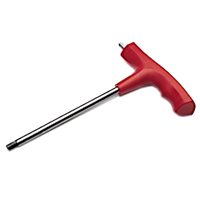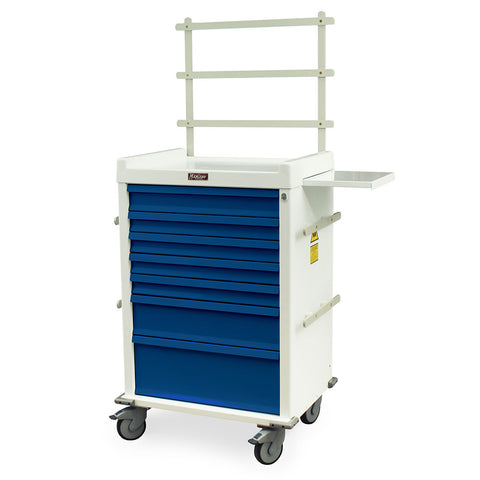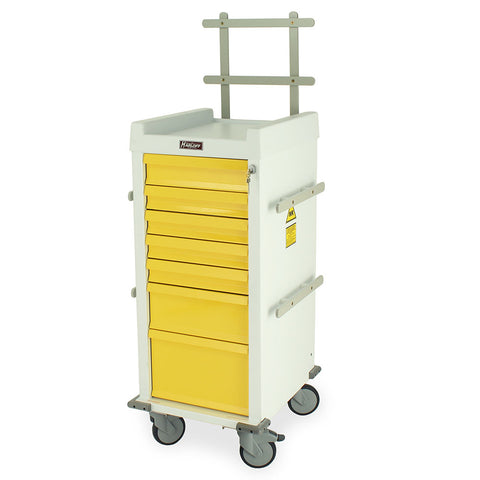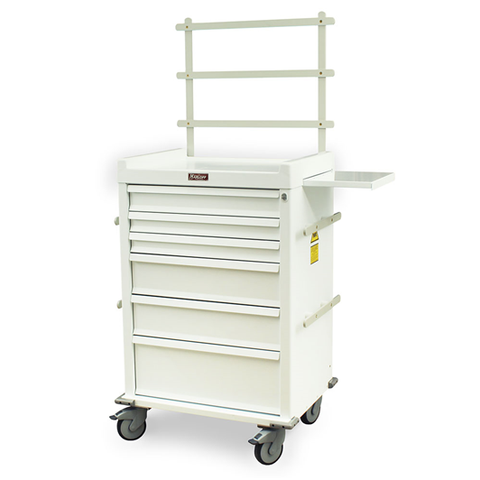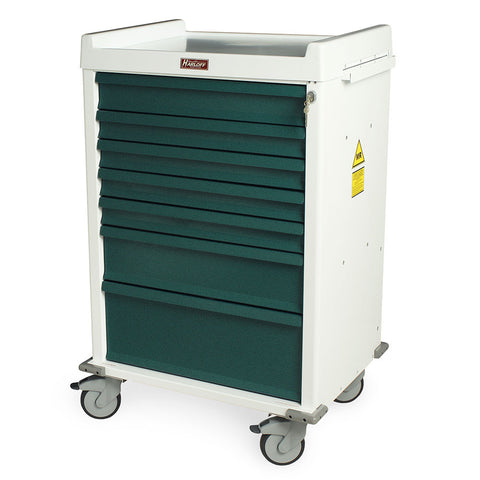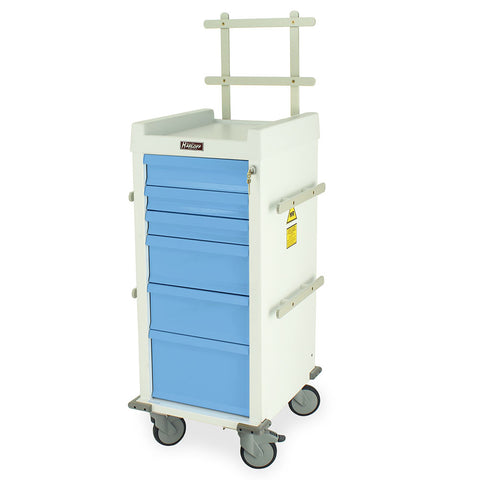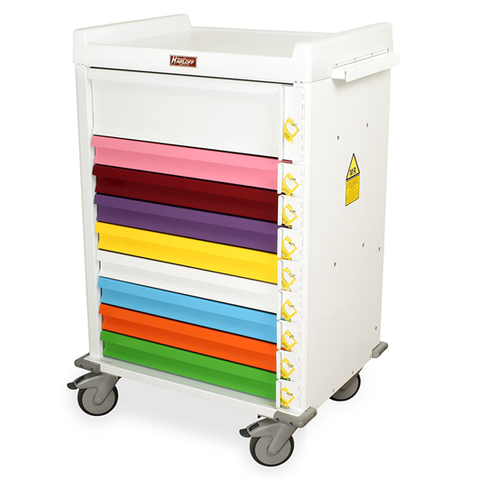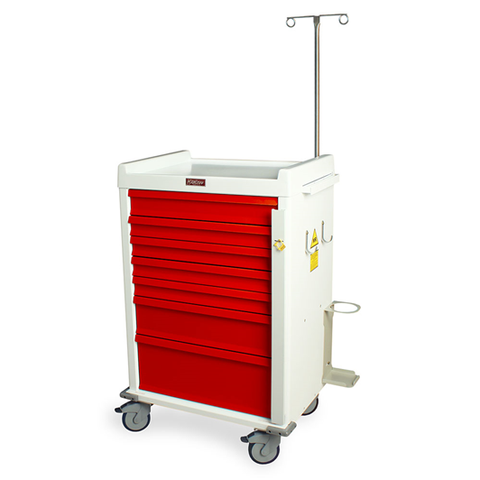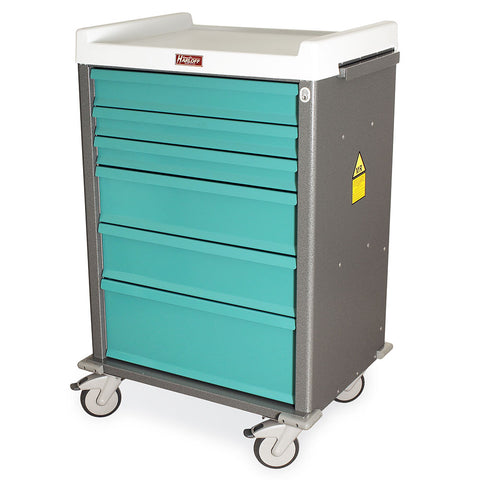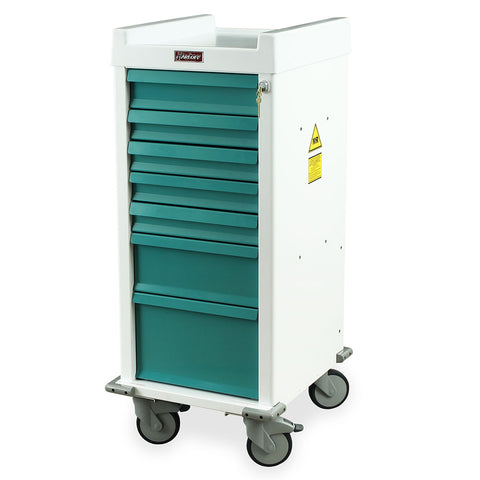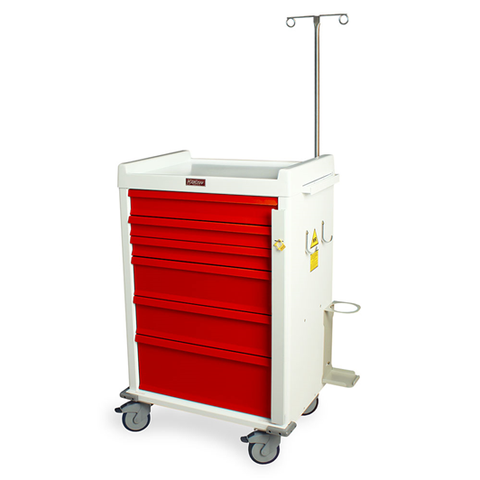Why MRI Warning Signs Are Critical in Every Radiology Department
MRI technology has transformed modern medicine — delivering high-resolution images without radiation exposure. But MRI scanners operate with powerful static magnetic fields that are always on, even when the machine is idle. These fields can turn ferromagnetic objects into dangerous projectiles, heat up certain implants, or disrupt medical devices.
MRI Warning Signs are the first line of defense against these hazards. They alert patients, staff, and visitors to critical safety requirements, preventing accidents and keeping your facility compliant with ASTM F2503 and ACR (American College of Radiology) guidelines.
If you’re looking for a general overview of MRI safety signage, see The Complete Guide to MRI Safety Signs: What They Mean and Why They Matter.
This article focuses on the specific warning signs every radiology department must have, with best practices to keep your MRI suite safe.
Understanding MRI Safety Terminology (ASTM F2503)
Before reviewing the top signs, it’s important to use current safety terminology. Outdated labels like “MR Compatible” have been replaced with three clear categories:
-
MR Safe – Green icon. The item poses no known hazard in any MRI environment.

-
MR Conditional – Yellow icon. The item is safe only under specific MRI conditions (such as field strength or SAR limits).

-
MR Unsafe – Red icon. The item poses hazards in any MRI environment.

Signs and labels throughout your MRI suite must follow this terminology to avoid confusion and ensure compliance.
For a deeper explanation, review MRI Zone Signs Explained: Zone 1–4 Requirements & Best Practices.
The Top 10 MRI Warning Signs You Need
Below are the essential signs for every MRI department. Each type is available through MRI Med — your trusted source for ASTM-compliant signage.
1. MRI Zone Entrance Signs
Zone 1 is accessible to the public, but as patients approach Zone 2 and beyond, access must be controlled. Use MRI Entrance Signs to start educating visitors about magnetic hazards before they enter restricted areas.
These signs explain that MRI safety screening is required and remind patients to remove all metallic objects.
2. MRI Restricted Access Signs
Only MRI-trained personnel should have unsupervised access to Zone 3 and Zone 4. Install MRI Restricted Area Signs at all doors leading into high-risk zones.
These signs warn unauthorized personnel not to enter without proper clearance, reducing the risk of unscreened individuals entering the magnet area.
3. MR Unsafe Equipment Labels
Any item that should never enter the MRI scanner room must be clearly labeled. Use MR Unsafe Labels for equipment, tools, or carts that contain ferromagnetic materials.
Labeling ensures staff instantly recognize which items must stay outside Zone 4.
4. MR Conditional Device Stickers
Some equipment is safe in the MRI environment — but only under specific conditions (e.g., 1.5T only, limited scan time, or defined SAR). Use MR Conditional Labels to provide these details directly on the device.
Clear labeling prevents misuse and allows staff to quickly verify whether an item can enter the scanner room.
5. Patient Screening Reminder Signs
Screening is critical for MRI safety. Install Patient Screening Signs in waiting and prep areas to remind patients to disclose implants, remove metallic items, and follow staff instructions.
These signs reduce delays by preparing patients for the safety process early.
6. No Metal Object Signs (Projectile Hazard)
Even small items like pens, scissors, or cell phones can become dangerous projectiles in Zone 4. Use No Metal Object Signs at the scanner room door to reinforce this rule.
Equip Your Team with Tools They Can Trust
Get high-quality, MRI-dedicated equipment that supports safer scans, better positioning, and smoother patient care.
View Trusted ProductsThis signage keeps loose objects out of the magnet room and prevents accidents.
7. Floor Decals for Safety Zones
In high-traffic facilities, floor signage is as important as wall signage. MRI Floor Decals guide staff and patients through each zone transition and warn them when they’re approaching restricted areas.
Floor markers add an extra layer of visibility and compliance.
8. Ferromagnetic Detection System (FMDS) Checkpoint Signs
If your facility uses ferromagnetic detection systems, make sure they’re clearly marked. FMDS Checkpoint Signs remind staff and patients that they must pass screening before entering Zone 4.
These checkpoints catch prohibited items before they ever reach the magnet room.
9. Bilingual MRI Safety Signs for Diverse Facilities
In facilities with multilingual patient populations, language barriers can lead to confusion. Use Bilingual MRI Safety Signs to ensure all patients understand the rules.
Clear communication in multiple languages reinforces compliance and safety.
10. Light-Up MRI Warning Signs for Special Applications
MRI Med offers light up signage that is sure to attract attention and not get missed, stating “Magnet Always On”, dispelling the common misconception that the magnet is turned off, or not magnetized between patients. Also important are reflective and glow in the dark signage, assisting with safety in the event of a power failure.
How to Place MRI Warning Signs for Maximum Effectiveness
Visibility and Eye-Level Placement
Signs should be placed at eye level on doors and walls where staff, patients, and visitors cannot miss them. If a sign will become no longer visible if placed on a door that is frequently opened, place additional signage next to the door, ensuring that no important safety messages will be missed.
Using Door, Wall, and Floor Markers Together
Layering signage (wall plus floor decals) reinforces warnings at critical transition points.
Updating Signs to Stay Compliant with Standards
Inspect your MRI suite annually to ensure all signs use current terminology and remain in good condition. If your facility still uses older “MR Compatible” labels, replace them immediately with MR Safe, MR Conditional, or MR Unsafe signage.
Common Mistakes to Avoid When Selecting MRI Warning Signs
- Using outdated terminology — “MR Compatible” is obsolete.
- Poor-quality materials — cheap signs fade or peel quickly.
- Inconsistent signage — mixed labels confuse staff and patients.
Choosing the Best MRI Warning Signs for Your Facility
ASTM F2503-Compliant Labels
Ensure every sign and label uses correct MR Safe, MR Conditional, or MR Unsafe icons.
Durable, High-Visibility Materials
Choose rigid plastics, aluminum, or laminated vinyl for long-lasting performance.
Conclusion: Make MRI Safety Clear and Consistent
MRI warning signs are essential to protect patients, staff, and visitors from the powerful magnet environment. With the top 10 signs outlined here, your radiology department can maintain compliance, reduce risk, and ensure smooth daily operations.
Audit your MRI suite today — and upgrade to ASTM F2503-compliant signage from MRI Med to keep everyone safe.
FAQs
1. What do MRI warning signs mean?
They indicate access restrictions, equipment safety status (MR Safe, MR Conditional, MR Unsafe), and required safety actions.
2. Where should MRI warning signs be placed?
At every transition between MRI safety zones, on doors, walls, and floors for maximum visibility.
3. What’s the difference between MR Safe, MR Conditional, and MR Unsafe labels?
MR Safe poses no hazards, MR Conditional is safe only under specified conditions, and MR Unsafe must never enter the MRI scanner room.
4. How often should MRI warning signage be reviewed?
Inspect annually or whenever new equipment or safety standards are introduced.
